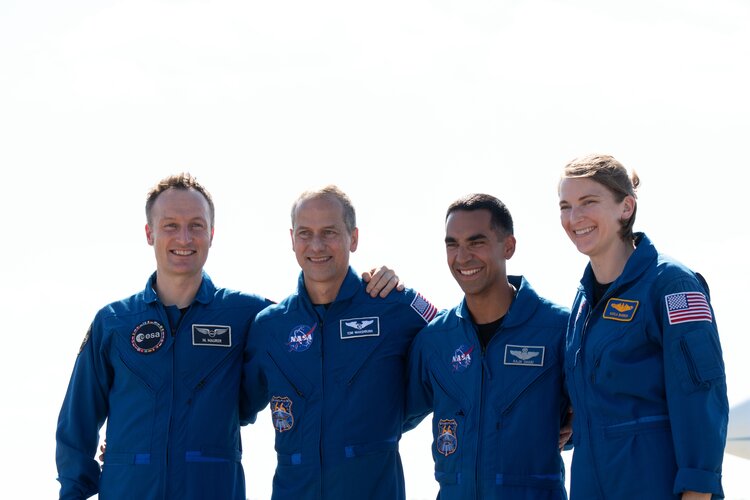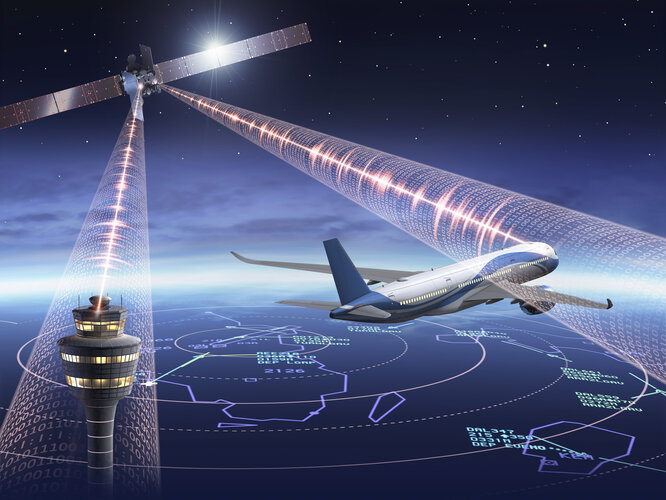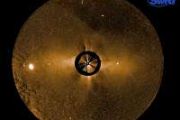
Copernical Team
‘ESA Champions’ award initiative launched

Whether you are hosting a YouTube channel about space or volunteering to speak at your local school, we want to recognise and reward your passion and advocacy for space.
Crew-3 say cheese
 Image:
Image:
ESA astronaut Matthias Maurer and his NASA crew mates Raja Chari, Thomas Marshburn and Kayla Barron are all smiles as they arrive at NASA’s Kennedy Space Center in Florida, USA on 26 October 2021.
Collectively, the astronauts make up Crew-3 and will travel to the International Space Station on the SpaceX Crew Dragon spacecraft “Endurance”. The first launch opportunity for Crew-3 is 07:21 CET (06:21 GMT, 02:21 EDT) Sunday 31 October 2021, with a backup date of 3 November.
The Dragon will dock with the Space Station 22 hours after launch, allowing for a short overlap with the Crew-2 members who
ESA acts to make air travel greener

Air passengers will soon be able to cut their carbon footprint when travelling on flights that are routed using satellites.
Hubble gives unprecedented, early view of a doomed star's destruction
 Like a witness to a violent death, NASA's Hubble Space Telescope recently gave astronomers an unprecedented, comprehensive view of the first moments of a star's cataclysmic demise. Hubble's data, combined with other observations of the doomed star from space- and ground-based telescopes, may give astronomers an early warning system for other stars on the verge of blowing up.
"We used to ta
Like a witness to a violent death, NASA's Hubble Space Telescope recently gave astronomers an unprecedented, comprehensive view of the first moments of a star's cataclysmic demise. Hubble's data, combined with other observations of the doomed star from space- and ground-based telescopes, may give astronomers an early warning system for other stars on the verge of blowing up.
"We used to ta New galaxy images reveal a fitful start to the Universe
 New images have revealed detailed clues about how the first stars and structures were formed in the Universe and suggest the formation of the Galaxy got off to a fitful start. An international team of astronomers from the University of Nottingham and Centro de Astrobiologia (CAB, CSIC-INTA) used data from the Hubble Space Telescope (HST) and the Gran Telescopio Canarias (GTC), the so-called Fron
New images have revealed detailed clues about how the first stars and structures were formed in the Universe and suggest the formation of the Galaxy got off to a fitful start. An international team of astronomers from the University of Nottingham and Centro de Astrobiologia (CAB, CSIC-INTA) used data from the Hubble Space Telescope (HST) and the Gran Telescopio Canarias (GTC), the so-called Fron Astrophysicists reveal largest-ever suite of universe simulations
 Collectively clocking in at nearly 60 trillion particles, a newly released set of cosmological simulations is by far the biggest ever produced. The simulation suite, dubbed AbacusSummit, will be instrumental in extracting secrets of the universe from upcoming surveys of the cosmos, its creators predict. They present AbacusSummit in several papers published October 25 in Monthly Notices of the Ro
Collectively clocking in at nearly 60 trillion particles, a newly released set of cosmological simulations is by far the biggest ever produced. The simulation suite, dubbed AbacusSummit, will be instrumental in extracting secrets of the universe from upcoming surveys of the cosmos, its creators predict. They present AbacusSummit in several papers published October 25 in Monthly Notices of the Ro BeiDou-based monitoring system in operation at world's highest dam
 A dam deformation monitoring system based on BeiDou Navigation Satellite System has been put into operation in Usoi Dam in Tajikistan, according to China's National Time Service Center (NTSC) under the Chinese Academy of Sciences (CAS).
Sarez Lake, located in the Pamir region in eastern Tajikistan, has an altitude of 3,263 meters above sea level. It was naturally created in 1911 when an ea
A dam deformation monitoring system based on BeiDou Navigation Satellite System has been put into operation in Usoi Dam in Tajikistan, according to China's National Time Service Center (NTSC) under the Chinese Academy of Sciences (CAS).
Sarez Lake, located in the Pamir region in eastern Tajikistan, has an altitude of 3,263 meters above sea level. It was naturally created in 1911 when an ea Searching for Earth 2.0? Zoom in on a star

Astronomers searching for Earth-like planets in other solar systems have made a breakthrough by taking a closer look at the surface of stars.
A new technique developed by an international team of researchers—led by Yale astronomers Rachael Roettenbacher, Sam Cabot, and Debra Fischer—uses a combination of data from ground-based and orbiting telescopes to distinguish between light signals coming from stars and signals coming from planets orbiting those stars.
A study detailing the discovery has been accepted by The Astronomical Journal.
"Our techniques pull together three different types of contemporaneous observations to focus on understanding the star and what its surface looks like," said Roettenbacher, a 51 Pegasi b postdoctoral fellow at Yale and lead author of the paper.
NASA's S-MODE mission kicks off 1st deployment
 After a successful test run in May, a NASA campaign is deploying aircraft, a research vessel and several kinds of autonomous ocean robots to study small ocean whirlpools, eddies and currents. Using instruments at sea and in the sky, the Sub-Mesoscale Ocean Dynamics Experiment (S-MODE) team aims to understand the role these ocean processes play in vertical transport, the movement of heat, nutrien
After a successful test run in May, a NASA campaign is deploying aircraft, a research vessel and several kinds of autonomous ocean robots to study small ocean whirlpools, eddies and currents. Using instruments at sea and in the sky, the Sub-Mesoscale Ocean Dynamics Experiment (S-MODE) team aims to understand the role these ocean processes play in vertical transport, the movement of heat, nutrien Verizon to use Amazon satellites for broadband Internet in rural areas
 Verizon announced on Tuesday that it will use a satellite communications system that's being put together by Amazon to expand broadband Internet access to rural areas of the United States.
In announcing the partnership, the companies said the plan is intended to bring access to unserved and underserved U.S. communities.
Amazon is planning to send more than 3,200 satellites into orbit
Verizon announced on Tuesday that it will use a satellite communications system that's being put together by Amazon to expand broadband Internet access to rural areas of the United States.
In announcing the partnership, the companies said the plan is intended to bring access to unserved and underserved U.S. communities.
Amazon is planning to send more than 3,200 satellites into orbit 

































